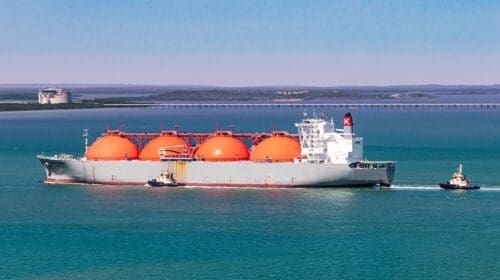Crude oil and natural gas drilling and development in Texas has embarked upon a new cycle of expansion, according to the latest Texas Petro Index (TPI), which improved to 160.4 in March to post its fourth straight monthly increase.
“Economically speaking, the TPI data indicate that when oil and gas industry gathers in Wichita Falls in late April for the annual meeting and exposition of the Texas Alliance of Energy Producers, they will be meeting during a time of industry expansion for the first time in three years,” said Karr Ingham, the economist who created the TPI and updates it monthly. “This is the first time these guys have had the wind at their backs since 2014.”
Driving the TPI upward during first quarter 2017 were crude oil and natural gas prices, drilling activity, the number of drilling permits issued, and the value of statewide oil and gas production, which were all higher compared to year-ago levels. However, the TPI is only about half the value of the record TPI of 313.5 in November 2014, and it still has not caught up in some other economic arenas.
Employment is increasing, but it still lags behind last year after the loss of well over 100,000 upstream jobs, said Ingham. An estimated 9,000 jobs have been added back since reaching the low point in September 2016.
“We still have a long way to go,” Ingham said, “but 2017 is going to be a year of recovery and expansion in the Texas statewide oil and gas exploration and production economy. “Activity levels will continue to expand, jobs will continue to be added, and the industry will support the broader state economy again, rather than acting as a drag on growth as it has for the prior two years.”
A composite index based upon a comprehensive group of upstream economic indicators, the Texas Petro Index in March was 160.4, about 5.6 percent less than in March 2016. Before the recent economic downturn, the TPI peaked at a record 313.5 in November 2014, which marked the zenith of an economic expansion that began in December 2009, when the TPI stood at 187.4.
TPI Highlights in 1st quarter (1stQ) 2017:
- The statewide working rig count averaged 368, about 43.5 percent more than in 1stQ 2016 when on-average 257 rigs were drilling.
- The Texas Railroad Commission issued 3,257 drilling permits, 104.3 percent more than in 1stQ 2016 when 1,594 permits were granted.
- Producers recovered an estimated 291.4 million barrels of crude oil in Texas, 3 percent less than in 1stQ 2016.
- Producers recovered about 1.93 billion cubic feet of natural gas in Texas, 7.5 percent less than in 1stQ 2016.
- Crude oil wellhead prices averaged $48.47 per barrel ($/bbl), 60.8 percent higher than in 1st Q 2016, boosting the estimated value of Texas-produced crude oil by 55.5 percent to about $14.1 billion.
- Natural gas prices averaged $2.88 per thousand cubic feet ($/Mcf), 51.7 percent more than in 1stQ 2016, increasing the estimated value of Texas-produced natural gas by 40.2 percent to nearly $5.55 billion.
- About 199,000 Texans on average were employed in the oil and gas production, drilling and service sectors, about 6.1 percent fewer than the average of 211,975 in 1stQ 2016.
TPI Highlights in March:
- Estimated crude oil production in Texas totaled more than 99.6 million barrels, 2.5 percent less than in March 2016. With oil prices in March averaging $46.15/bbl, the value of Texas-produced crude oil amounted nearly $4.6 billion, slightly more than 30 percent more than in March 2016.
- Texas natural gas output reached nearly 666.4 billion cubic feet, a year-over-year decline of about 5.9 percent. With natural gas prices in March averaging $2.74/Mcf, the value of Texas-produced gas increased about 57.8 percent to more than $1.82 billion.
- The Baker Hughes count of active drilling rigs in Texas averaged 399, 80.5 percent more units than in March 2016 when an average of 221 rigs were working. Drilling activity in Texas peaked in September 2008 at a monthly average of 946 rigs before falling to a trough of 329 in June 2009. In the economic expansion that began in December 2009, the statewide average monthly rig count peaked at 932 in May 2012 and June 2012.
- The number of original drilling permits issued was 1,310, about 156.4 percent more than the 511 permits issued in March 2016.
- An estimated average of 201,300 Texans remained on upstream oil and gas industry payrolls, based upon revised quarterly data from the Texas Workforce Commission, about 2.2 percent fewer than in March 2016 and about 34.2 percent fewer than the estimated high of 306,020 in December 2014. According to TPI estimates, the trough of upstream oil and gas employment in Texas before the expansion ending December 2014 was 184,640 in October 2009. During the previous growth cycle, industry employment peaked at 225,965 in October 2008.
ABOUT the TPI: The Texas Petro Index is a service of the Texas Alliance of Energy Producers, the nation’s largest state association of independent oil and gas producers.
For additional information, please contact:
- Karr Ingham at 806-373-4814 (office) or 806-433-5309 (mobile), or karr@inghamecon.com.
- Alex Mills, president of the Texas Alliance of Energy Producers, at 800-299-2998 (office – toll free) or 940-781-0350 (mobile), or alexm@texasalliance.org; or
- A. D. Koen, Texas Alliance public relations specialist, at 713-812-1623 (office), or adkoen@comcast.net.
Alex Mills is the former President of the Texas Alliance of Energy Producers. The Alliance is the largest state oil and gas associations in the nation with more than 3,000 members in 305 cities and 28 states.













